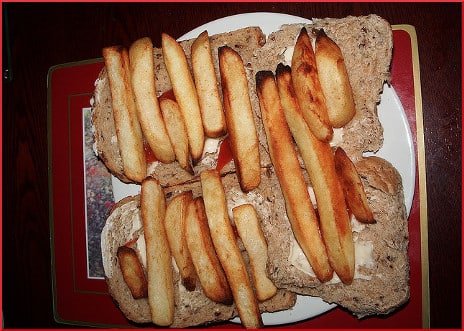Analysis of data provided to the National Health and Nutrition Examination Survey (NHANES) by thousands of American children and teenagers revealed that on any given day, 22% of them eat pizza. Difficult as it may be to believe, this is actually an improvement over earlier reports, according to Lisa M. Powell, a health policy researcher from the University of Illinois, and her colleagues.
Kids from middle-income and high-income families have slacked off a bit on the pizza consumption. Also, the young are eating less pizza for dinner, although the breakfast, lunch, and snack amounts have apparently not diminished by much. This particular research team accused pizza of being an obesity villain equal to sugary drinks, which makes pizza a very sizable villain. The report says:
On days when children eat pizza, they consume an average of 408 additional calories, three additional grams of fat and 134 additional milligrams of salt compared with their regular diet. For teens, putting pizza on the day’s menu adds 624 calories, five grams of fat and 484 milligrams of salt.
Chips, Crisps, and Fries
Evidence against fried snacks continues to pile up—as if there were ever any doubt. Young people who responded to a poll at Dr. Pretlow’s Weigh2Rock website voted for potato chips as the worst, most seductive and addictive problem food. Like their softer cousins the French fries, chips (“crisps” in the United Kingdom) turn bland potatoes into delicious grease delivery systems.
Crisps are one reason why, as Lizzie Parry phrased it for The Daily Mail, “British girls under 20 are the fattest in Europe.” She told the story of Brooke Clarke, who at age 10 was so big she was forced to wear her mother’s size 14 clothing. Apparently, the 5’1” Brooke was overweight by two stone, or 28 pounds. Granted, that is nowhere close to the ideal for a 10-year-old, but in the world sweepstakes of massively obese children, 28 extra pounds are far from impressive.
As so often happens, there was a complication—asthma, which left Brooke dependent on her inhaler. The short walk to school left her out of breath. The reason this even became a story is that the young girl eventually lost the extra weight. Parry describes her former condition:
At her peak, Brooke ate three to four packets of crisps a day, washed down with two liters of Coke…At her heaviest, Brooke was consuming almost double her daily recommended amount of calories and three times the amount of sugar…
Two liters is an awful lot of sugar-sweetened beverage to be consuming in one day, especially for someone who mainly sits around watching TV. Nowadays, there is more physical activity by Brooke, with her little brother and her mum, in the form of bike rides or swimming. The interesting part is, by cutting out the fried snacks and the fizzy drinks, Brooke dropped the extra weight in just three months.
Brooke’s mother told the press that losing the weight saved her daughter’s life. That is wonderful, but why did it take so long? Had she really never heard before that being overweight is not healthful, or that fizzy drinks cause obesity? Was this really momentous news? Probably not. The turning point here was a warning from the school nurse that Brooke was “very overweight.” Which at least goes to show that parents are not universally resentful of this intervention.
Your responses and feedback are welcome!
Source: “Experts zero in on pizza as prime target in war on childhood obesity
LATimes.com, 01/19/15
Source: “10 stone at 10 years old
DailyMail.co.uk, 07/27/15
Image by Smabs Sputzer


 FAQs and Media Requests:
FAQs and Media Requests: 











